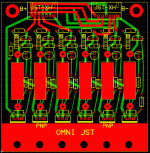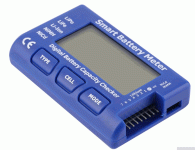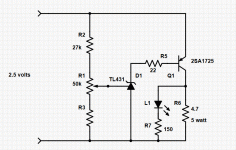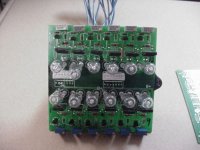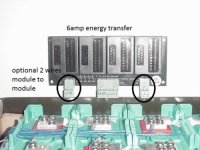Sunder
10 MW
I'm a newbie at electronics, so go easy... But here's my thought.
Common sized BMSes are dirt cheap. If you want 10S, 12-14S, even up to 20S BMS for 4.2v or 3.7v per cell batteries, you can usually get away with $10-$50 USD.
But if you want anything unusual, like 4.0v to preserve LiPo cell life, or 2.7 to run LTO, well, you either need to get programmable, which costs an arm and a leg, or something rare, which is likewise expensive.
BMSes do a lot of functions, but really, if you design well, you only need one, and the others are "acceptable risks" (to me anyway).
1. Pack overcharge - Unless your charger has a catastrophic failure, this should never happen.
2. Pack over discharge - Unless your load has no LVC or an inappropraite LVC, this should never happen.
3. Pack overcurrent draw - May be useful in case you have a short, but a fuse can do the same thing.
4. Cell balance/cell overcharge - This is the key one I'm interested in.
So I was thinking an extremely simple circuit to do a cell balancing. Why not get say, a 4.0v zener diode, and install it in reverse. At anything under 4.0v, it passes no voltage. At 4.1v, it passes through 0.1v. You can burn this off using a small 1-2w resistor.
If all zeners are perfectly matched, that means that you will effectively top-balance the pack, by having it slowly burn energy when any cell is over 4.0v.
I want to balance a 42S LTO battery, but if it works, I'll be using it to make 4.0v per cell cell balancers for personal use for my eBike/eMotorcycle.
I'm thinking of prototyping one of these up for a small pack (maybe 4S or 6S), then if it works, see if I can get one 3D printed professionally. Anyone like to poke holes in this design? Am I dreaming?
Common sized BMSes are dirt cheap. If you want 10S, 12-14S, even up to 20S BMS for 4.2v or 3.7v per cell batteries, you can usually get away with $10-$50 USD.
But if you want anything unusual, like 4.0v to preserve LiPo cell life, or 2.7 to run LTO, well, you either need to get programmable, which costs an arm and a leg, or something rare, which is likewise expensive.
BMSes do a lot of functions, but really, if you design well, you only need one, and the others are "acceptable risks" (to me anyway).
1. Pack overcharge - Unless your charger has a catastrophic failure, this should never happen.
2. Pack over discharge - Unless your load has no LVC or an inappropraite LVC, this should never happen.
3. Pack overcurrent draw - May be useful in case you have a short, but a fuse can do the same thing.
4. Cell balance/cell overcharge - This is the key one I'm interested in.
So I was thinking an extremely simple circuit to do a cell balancing. Why not get say, a 4.0v zener diode, and install it in reverse. At anything under 4.0v, it passes no voltage. At 4.1v, it passes through 0.1v. You can burn this off using a small 1-2w resistor.
If all zeners are perfectly matched, that means that you will effectively top-balance the pack, by having it slowly burn energy when any cell is over 4.0v.
I want to balance a 42S LTO battery, but if it works, I'll be using it to make 4.0v per cell cell balancers for personal use for my eBike/eMotorcycle.
I'm thinking of prototyping one of these up for a small pack (maybe 4S or 6S), then if it works, see if I can get one 3D printed professionally. Anyone like to poke holes in this design? Am I dreaming?


